Market Data

April 23, 2019
BLS: Regional Jobs Data Strong in Q1
Written by Peter Wright
In Q1 2019, all regions except the North Central had positive employment growth.
First-quarter regional employment data by state was released by the Bureau of Labor Statistics (BLS) on Friday. The state data follows and confirms the strong employment situation that we reported at the national level two weeks ago. In the first quarter, the states reported a total of 507,000 jobs created. The national report indicated a total of 541,000 jobs.
The states compile their employment numbers independently of the Feds, and then both are reported by the BLS. In the six years since and including Q1 2013, the Feds reported total job creation of 15,752,000 and the states reported 14,993,000. Our report covers only the lower 48 states, and the state numbers don’t include those such as the military that are employed overseas. Therefore, the federal and state totals are impressively close. Figure 1 shows the history of federal data totals since 1992 and Figure 2 shows the same format for the state data.
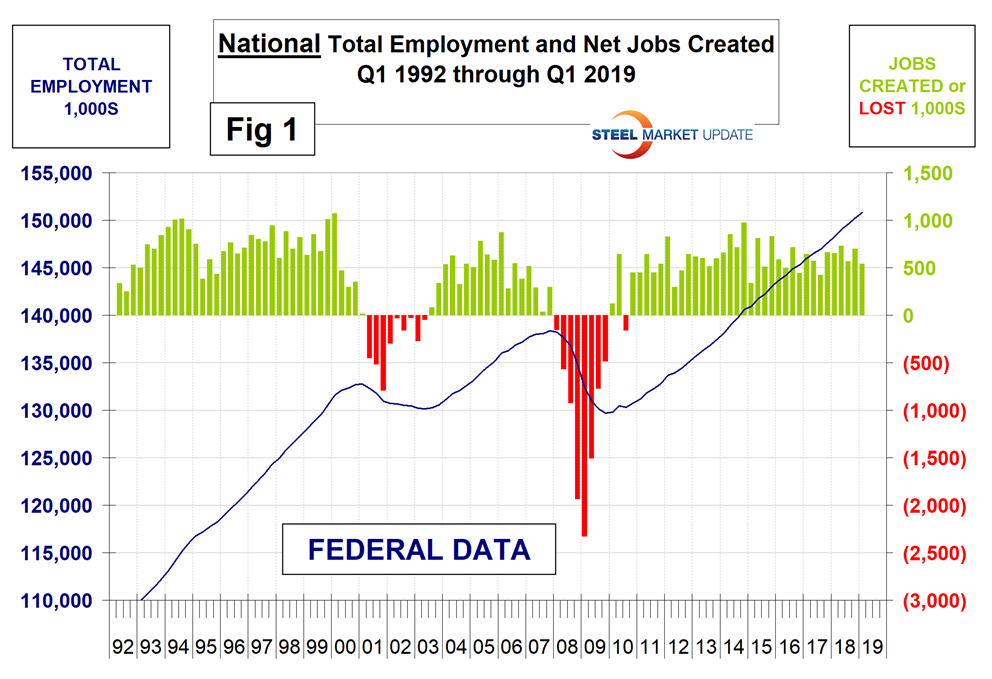
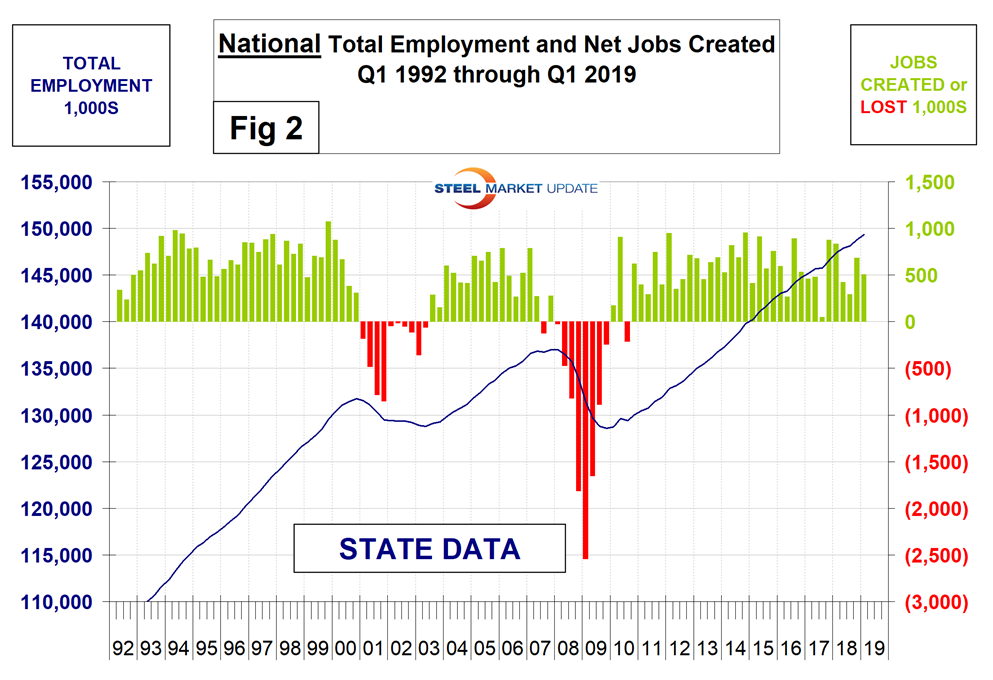
SMU has graphs in the same format for 10 geographic regions and can produce them for individual states on request. Figure 3 shows the history of the Pacific region, which has the largest number employed, closely followed by the East N. Central region.
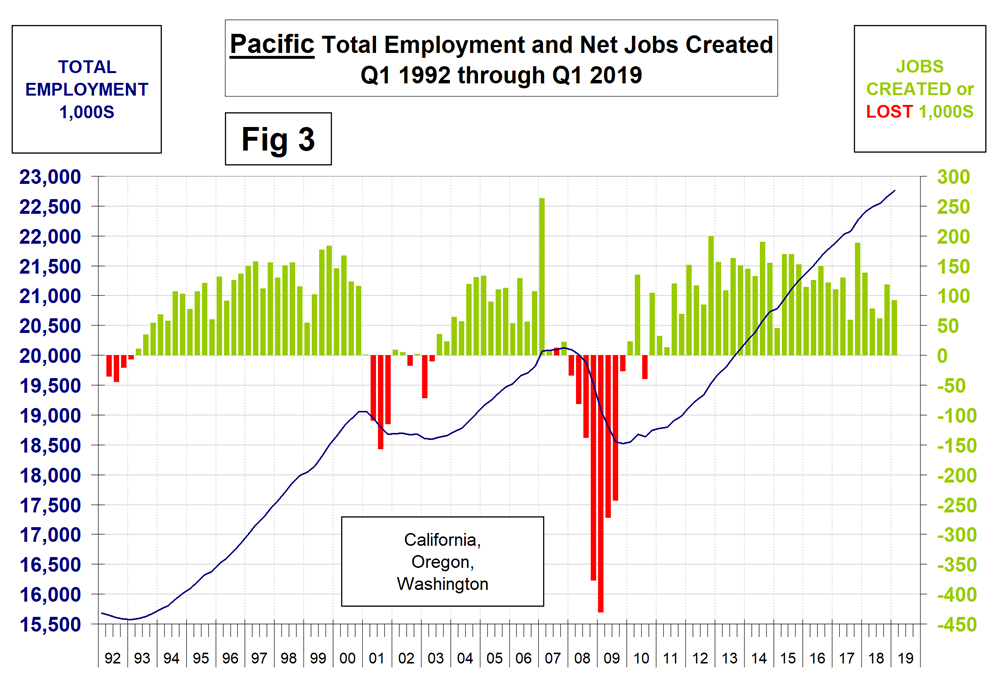
The 10 geographic regions described in this report are:
New England, (CT, ME, MA, NH, RI, VT)
North East, (NY, PA, NJ)
Mid Atlantic, (DE, DC, MD, NC, SC, VA, WV)
North Central, (IA, KS, MN, MO, NE, ND and SD)
East North Central, (IL, IN, MI, OH and WI)
East South Central, (AL, KY, MS and TN)
South Central, (TX, OK, LA and AR)
Mountain, (AZ, CO, ID, MT, NV, NM, UT, WY)
Pacific, (CA, OR, WA)
South East, (FL, GA)
Table 1 shows the history of quarterly job creation by region since Q1 2014. In Q4 2018 and Q1 2019, the Pacific region created the most jobs. The numbers are seasonally adjusted and all except the North Central region had a positive net gain in Q1 2019.
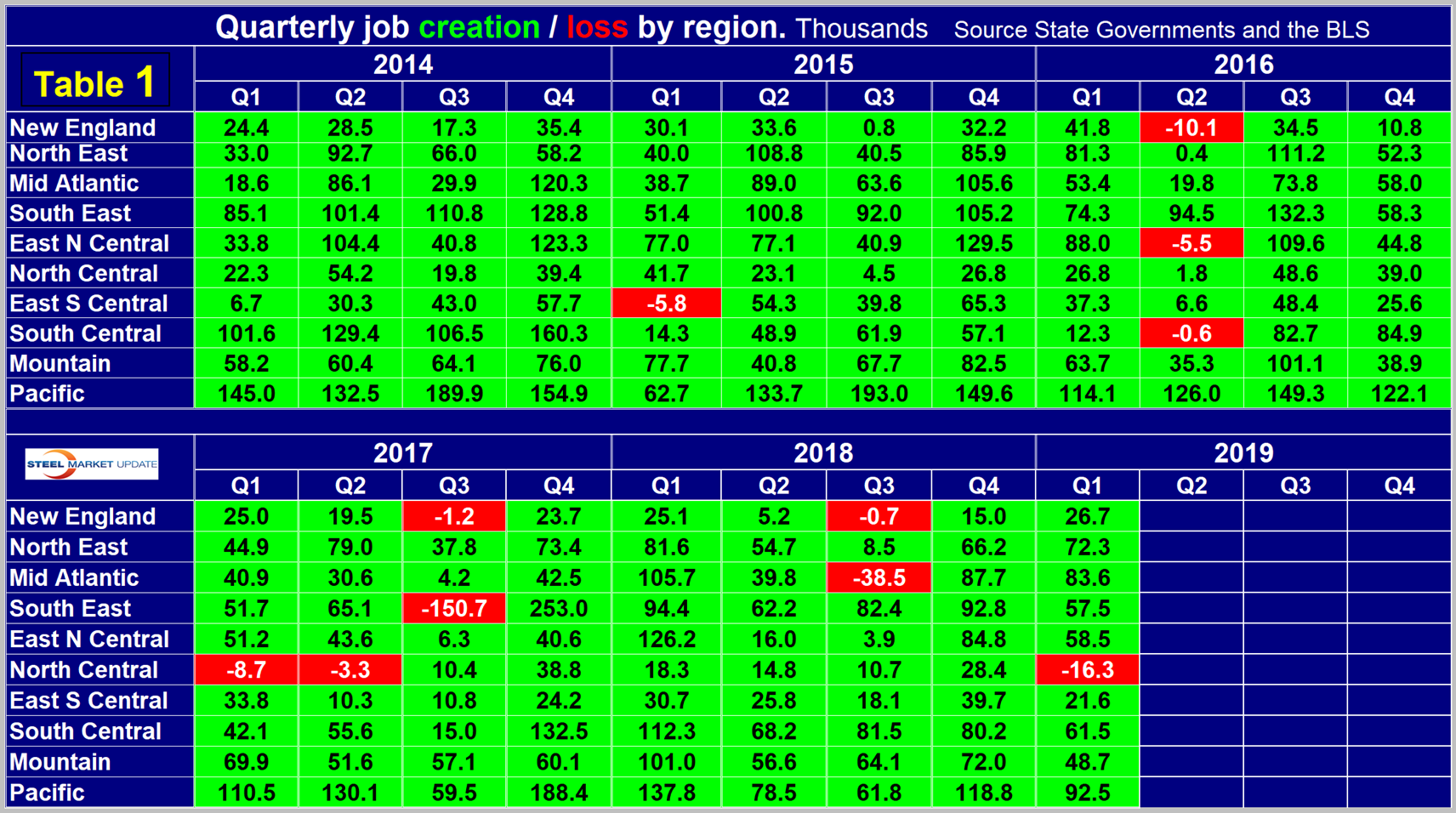
The regions have fared very differently since the pre-recession high of first-quarter 2008 and since the low point of fourth-quarter 2009. By the states’ calculations, there are now 12,358,000 more people employed than there were immediately before the recession, but of that number 53.2 percent were created in the South Central, the South East, the Mountain and the Pacific regions (Table 2).
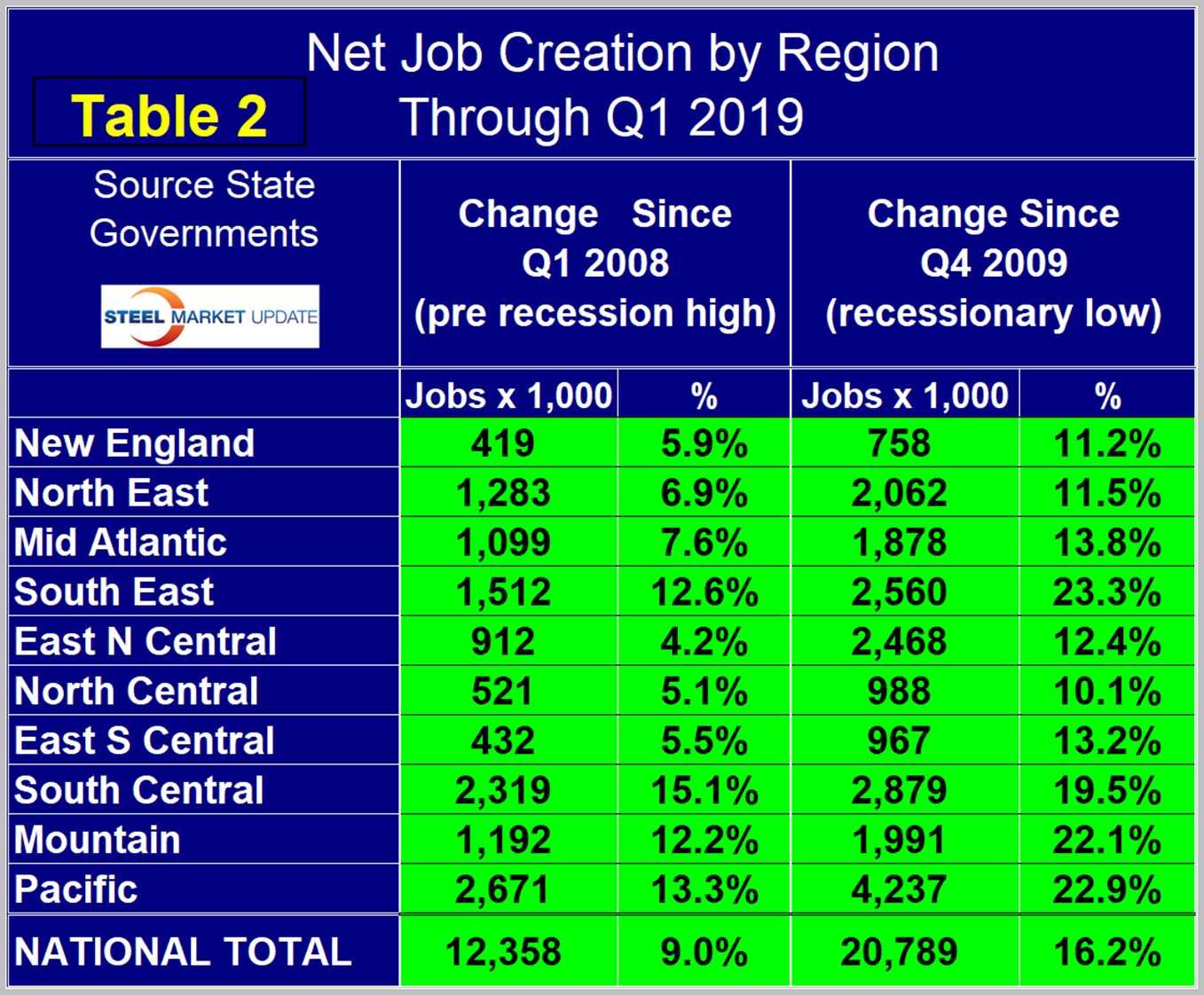
The third quarter of 2015 was the first time that every region had more people employed than at the pre-recession peak. The rate of job creation still varies widely across the country. In the last four quarters, the Mountain region has had the highest rate of job growth at 2.19 percent. The North Central region has had the worst performance with only a 0.35 percent growth (Table 3).
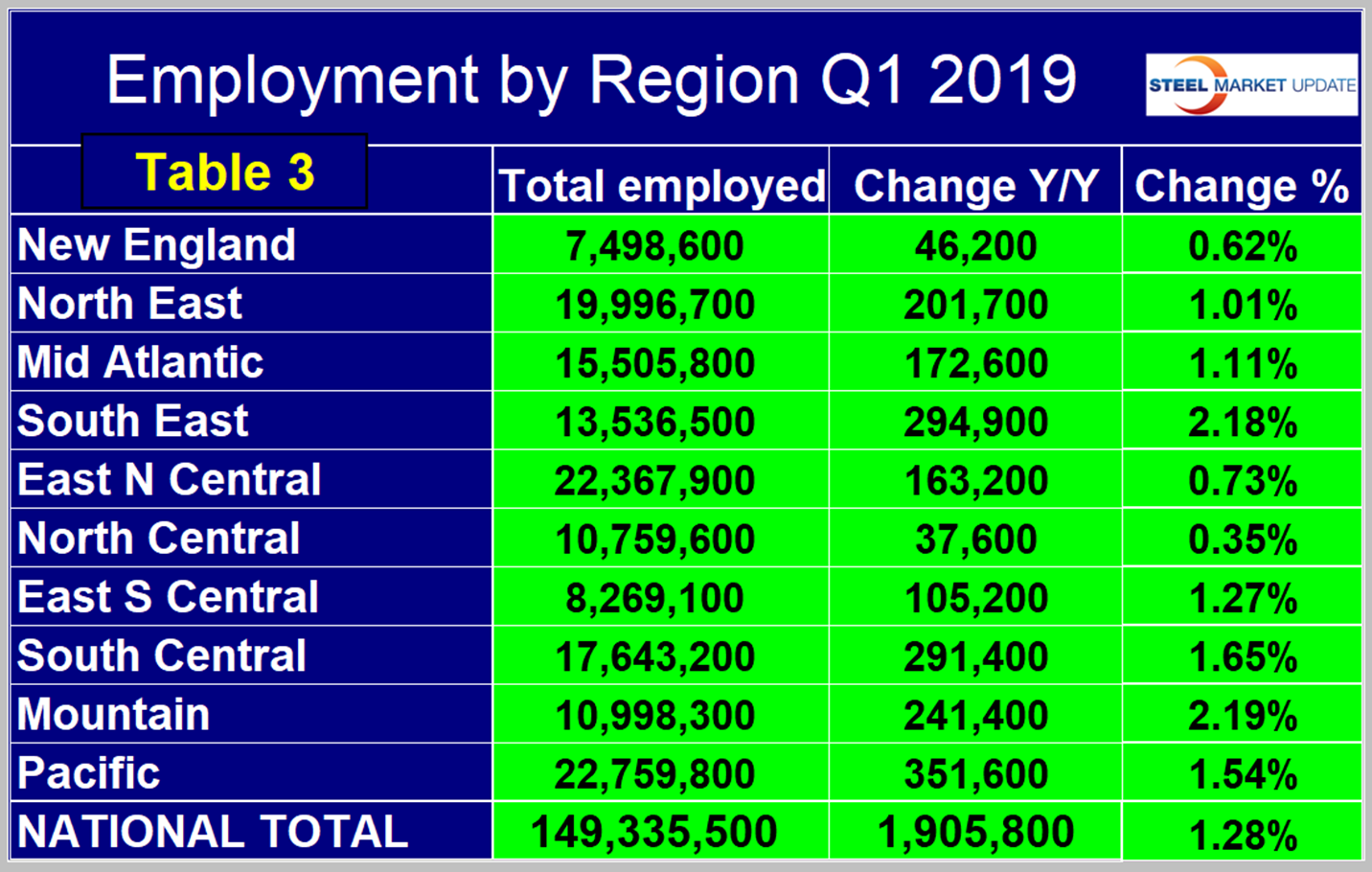
SMU Comment: We believe it’s important for those subscribers whose businesses are substantially regional to have as much data as possible to compare their own results with those of their locality. This report, along with our quarterly reports on regional GDP and regional imports, are intended to help in that respect.






